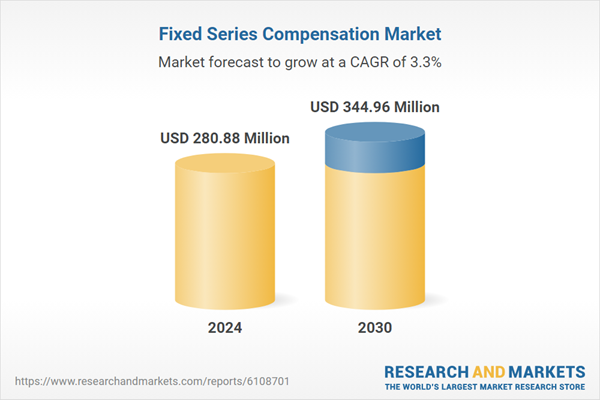Speak directly to the analyst to clarify any post sales queries you may have.
10% Free customizationThis report comes with 10% free customization, enabling you to add data that meets your specific business needs.
This is especially valuable in high-voltage networks where expansion is limited by cost, time, or environmental factors. The demand for FSC systems is further driven by surging electricity needs due to urbanization, industrial growth, and the electrification of transportation. With renewable energy sources like solar and wind located far from consumption centers, FSC systems are critical in stabilizing voltage and ensuring efficient long-distance power transmission. Additionally, increasing government initiatives and regulatory support for grid modernization and energy efficiency are accelerating FSC adoption globally.
Key Market Drivers
Transmission Grid Modernization and Capacity Expansion
Growing electricity demand and aging infrastructure are leading utilities to invest heavily in transmission network upgrades. Fixed Series Compensation (FSC) plays a pivotal role in improving power flow and reducing congestion in existing lines. Rather than constructing new lines, operators utilize FSC for faster and more economical capacity enhancement. For instance, North America has added over 50 series capacitor banks across its 345 kV and 500 kV lines.Europe has seen up to 35% transmission improvement in its 400 kV systems with FSC integration. India’s grid deployed over 40 FSC units to facilitate energy transfer from renewable-rich regions, while Colombia expanded its 500 kV line capacity by 640 MW. FSC systems can compensate 40%-70% of line reactance, enabling utilities to defer capital-intensive new construction. This makes FSC an attractive option in both developing and developed regions for efficient and cost-conscious grid modernization aligned with digital control strategies.
Key Market Challenges
High Initial Capital Investment and Long Payback Period
A major hurdle for the Fixed Series Compensation (FSC) market is the significant upfront investment required for deployment. High-voltage FSC systems involve specialized components - such as capacitors, MOVs, and bypass switches - and demand extensive site-specific planning and substation upgrades, resulting in elevated costs. This financial burden can be especially challenging for utilities in emerging markets or those operating under strict budget constraints.Even in advanced economies, the long payback period - often spanning seven to ten years - can deter investment without clear regulatory or financial incentives. FSC projects typically enhance grid reliability and capacity rather than generating direct revenue, making it difficult to justify investment compared to generation projects. Additionally, price sensitivity is heightened by inflation in raw materials like copper and aluminum. Until cost efficiencies through local manufacturing or economies of scale are realized, adoption in price-sensitive regions will remain limited without supportive policies or subsidies.
Key Market Trends
Integration of FSC in Renewable-Heavy Transmission Corridors
A key trend shaping the FSC market is its increasing deployment in renewable-dense transmission corridors. As wind, solar, and hybrid energy projects proliferate - often far from end-users - long-distance transmission networks are being pushed to their limits. In regions such as Texas, western China, and North Africa, FSC systems are becoming essential for maintaining voltage and managing fluctuating power flows.These lines often face instability due to intermittent renewable generation, which FSC helps mitigate by enhancing load capacity and reducing voltage drops. In some cases, FSC is integrated with energy storage and demand-side solutions for additional reliability. Many countries are now embedding FSC in transmission infrastructure plans to support carbon neutrality and renewable integration goals. Regulatory mandates in several regions even require compensation systems in new renewable corridors. This trend reinforces FSC's role as a foundational technology in enabling sustainable, high-efficiency power transmission for a renewable-powered future.
Key Market Players
- General Electric Company
- Siemens AG
- ABB Ltd.
- L&T Electrical & Automation
- Hyosung Group
- Infineon Technologies AG
- NR Electric Co., Ltd.
- Schneider Electric
- American Electric Power
- Liaoning Rongxin Xingye Power Technology Co., Ltd.
Report Scope:
In this report, the Global Fixed Series Compensation Market has been segmented into the following categories, in addition to the industry trends which have also been detailed below:Fixed Series Compensation Market, By Component:
- Reactors
- Capacitors
- Protection & Control Systems
- Circuit Breakers
- Others
Fixed Series Compensation Market, By Voltage Level:
- Low Voltage (Below 33 kV)
- Medium Voltage (33-132 kV)
- High Voltage (132-400 kV)
- Extra High Voltage (Above 400 kV)
Fixed Series Compensation Market, By Application:
- Voltage Stability
- Power Flow Control
- Transmission Capacity Enhancement
- Reduction of Line Losses
- System Oscillation Damping
Fixed Series Compensation Market, By Region:
- North America
- United States
- Canada
- Mexico
- Europe
- Germany
- France
- United Kingdom
- Italy
- Spain
- South America
- Brazil
- Argentina
- Colombia
- Asia-Pacific
- China
- India
- Japan
- South Korea
- Australia
- Middle East & Africa
- Saudi Arabia
- UAE
- South Africa
Competitive Landscape
Company Profiles: Detailed analysis of the major companies present in the Global Fixed Series Compensation Market.Available Customizations:
With the given market data, the publisher offers customizations according to a company's specific needs. The following customization options are available for the report.Company Information
- Detailed analysis and profiling of additional market players (up to five).
This product will be delivered within 1-3 business days.
Table of Contents
Companies Mentioned
- General Electric Company
- Siemens AG
- ABB Ltd.
- L&T Electrical & Automation
- Hyosung Group
- Infineon Technologies AG
- NR Electric Co., Ltd.
- Schneider Electric
- American Electric Power
- Liaoning Rongxin Xingye Power Technology Co., Ltd.
Table Information
| Report Attribute | Details |
|---|---|
| No. of Pages | 185 |
| Published | July 2025 |
| Forecast Period | 2024 - 2030 |
| Estimated Market Value ( USD | $ 280.88 Million |
| Forecasted Market Value ( USD | $ 344.96 Million |
| Compound Annual Growth Rate | 3.3% |
| Regions Covered | Global |
| No. of Companies Mentioned | 10 |









